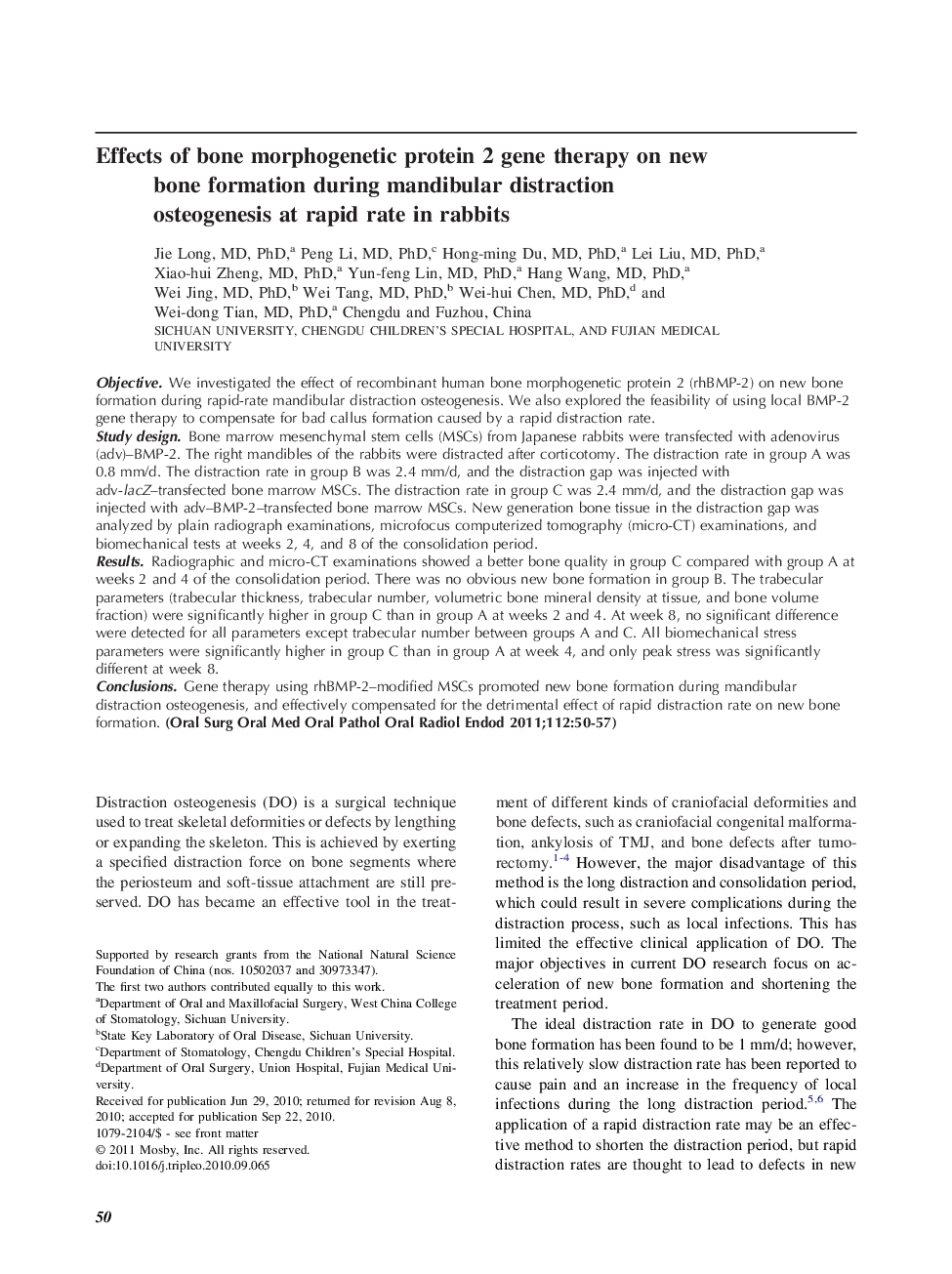| Article ID | Journal | Published Year | Pages | File Type |
|---|---|---|---|---|
| 3166980 | Oral Surgery, Oral Medicine, Oral Pathology, Oral Radiology, and Endodontology | 2011 | 8 Pages |
ObjectiveWe investigated the effect of recombinant human bone morphogenetic protein 2 (rhBMP-2) on new bone formation during rapid-rate mandibular distraction osteogenesis. We also explored the feasibility of using local BMP-2 gene therapy to compensate for bad callus formation caused by a rapid distraction rate.Study designBone marrow mesenchymal stem cells (MSCs) from Japanese rabbits were transfected with adenovirus (adv)–BMP-2. The right mandibles of the rabbits were distracted after corticotomy. The distraction rate in group A was 0.8 mm/d. The distraction rate in group B was 2.4 mm/d, and the distraction gap was injected with adv-lacZ–transfected bone marrow MSCs. The distraction rate in group C was 2.4 mm/d, and the distraction gap was injected with adv–BMP-2–transfected bone marrow MSCs. New generation bone tissue in the distraction gap was analyzed by plain radiograph examinations, microfocus computerized tomography (micro-CT) examinations, and biomechanical tests at weeks 2, 4, and 8 of the consolidation period.ResultsRadiographic and micro-CT examinations showed a better bone quality in group C compared with group A at weeks 2 and 4 of the consolidation period. There was no obvious new bone formation in group B. The trabecular parameters (trabecular thickness, trabecular number, volumetric bone mineral density at tissue, and bone volume fraction) were significantly higher in group C than in group A at weeks 2 and 4. At week 8, no significant difference were detected for all parameters except trabecular number between groups A and C. All biomechanical stress parameters were significantly higher in group C than in group A at week 4, and only peak stress was significantly different at week 8.ConclusionsGene therapy using rhBMP-2–modified MSCs promoted new bone formation during mandibular distraction osteogenesis, and effectively compensated for the detrimental effect of rapid distraction rate on new bone formation.
